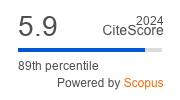Article | Open Access
A Discursive Evolution: Trade Publications Explain News Deserts to United States Journalists
| Views: | 2742 | | | Downloads: | 973 |
Abstract: Although diminishing newsrooms—and gaping holes in community news coverage—have been acknowledged in the US for over a decade, the term “news desert” did not widely emerge in discourse among industry professionals to refer to places that lacked news outlets until the fall of 2018. While much work in various disciplines, including journalism studies, aims to uncover the causes behind news deserts and the effects of their proliferation, scant research attempts to understand how journalists themselves see these issues. Utilizing metajournalistic discourse analysis of journalism trade magazines, this study examined seven publications and found 97 articles published between January 1, 2017, and September 30, 2022, that used the term “news desert.” The aim is to understand how industry insiders constructed the concept and explained the repercussions of the phenomenon to other journalists. This has broader implications for understanding how journalism as an interpretive community constructs the field and the issues confronting it, particularly in times of crisis. This study found that industry leaders cannot agree on a clear definition of news deserts, have only recently begun to acknowledge the ethnic and socioeconomic communities most affected by a lack of news coverage, and rarely articulate, beyond generalities, the effects news deserts have on citizens. These results are then considered through the lens of journalistic reflexivity, national audience response, and potential solutions.
Keywords: community journalism; local news; metajournalistic discourse; news deserts; trade publications; US media
Supplementary Files:
Published:
© Patrick Ferrucci, Teri Finneman, Meg Heckman, Pamela E. Walck. This is an open access article distributed under the terms of the Creative Commons Attribution 4.0 license (http://creativecommons.org/licenses/by/4.0), which permits any use, distribution, and reproduction of the work without further permission provided the original author(s) and source are credited.


